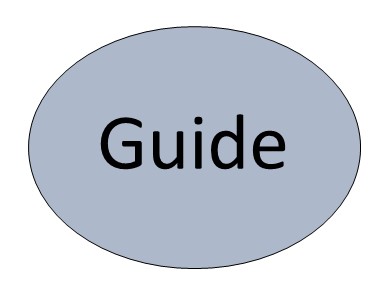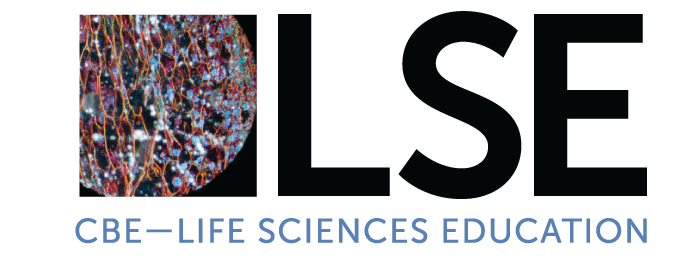Promoting Social Metacognition During Group Work
- Social metacognition consists of students sharing their ideas with peers, inviting peers to evaluate their ideas, and evaluating ideas shared by peers.
- While working in small groups, students can stimulate metacognitive processes in one another, leading to improved learning and increased reasoning.
- Students are likely to need structured guidance on how to be socially metacognitive.
- Providing students with metacognitive questions and prompts in a “collaboration script” has been shown to promote metacognition in computer science and social science courses.
 Chiu, M. M., & Kuo, S. W. (2010). From metacognition to social metacognition: Similarities, differences, and learning. Journal of Education Research, 3, 321-338. In this review, the authors outline benefits and challenges for students using social metacognition. First, social metacognition has the benefit of making a student’s metacognition visible when they communicate with their group members. Second, social metacognition allows for reciprocal scaffolding. Students support each other’s metacognition when they evaluate, repeat, and elaborate on one another’s ideas, or when they ask questions. Third, social metacognition can increase motivation when group members share risk and provide emotional support. In contrast, status effects make social metacognition challenging. For example, groups may defer to members they expect to be more competent at a task, and groups may discourage solutions from members they expect to be less competent at a task, regardless of the value of the solution being shared. These expectations are often affected by gender and race. Social metacognition is difficult when group members do not communicate well, which can lead to misunderstandings that reduce group participation. Lastly, cultural differences can amplify status effects and make communication more challenging. The authors suggest that instructors can model norms of respectful social metacognition during whole class discussions. Based on this review, instructors should note that (1) interactions between group members can help students be more metacognitive, and (2) instructors must cultivate a classroom climate that is safe and supportive to promote effective social metacognition.
Chiu, M. M., & Kuo, S. W. (2010). From metacognition to social metacognition: Similarities, differences, and learning. Journal of Education Research, 3, 321-338. In this review, the authors outline benefits and challenges for students using social metacognition. First, social metacognition has the benefit of making a student’s metacognition visible when they communicate with their group members. Second, social metacognition allows for reciprocal scaffolding. Students support each other’s metacognition when they evaluate, repeat, and elaborate on one another’s ideas, or when they ask questions. Third, social metacognition can increase motivation when group members share risk and provide emotional support. In contrast, status effects make social metacognition challenging. For example, groups may defer to members they expect to be more competent at a task, and groups may discourage solutions from members they expect to be less competent at a task, regardless of the value of the solution being shared. These expectations are often affected by gender and race. Social metacognition is difficult when group members do not communicate well, which can lead to misunderstandings that reduce group participation. Lastly, cultural differences can amplify status effects and make communication more challenging. The authors suggest that instructors can model norms of respectful social metacognition during whole class discussions. Based on this review, instructors should note that (1) interactions between group members can help students be more metacognitive, and (2) instructors must cultivate a classroom climate that is safe and supportive to promote effective social metacognition.
 Goos, M., Galbraith, P., & Renshaw, P. (2002). Socially mediated metacognition: Creating collaborative zones of proximal development in small group problem solving. Educational Studies in Mathematics, 49, 193-223. How is metacognition mediated by collaborative peer interactions? When students work together in small groups, they are expected to say their ideas out loud, which allows them to get feedback on their ideas from their peers. The authors studied high school juniors and seniors while they collaborated to learn new math processes. Through discourse analysis of audio and video recording they examined how often students (1) disclosed ideas and strategies to peers, (2) requested feedback on their ideas and strategies from peers, and (3) monitored their understanding of a peer’s ideas and strategies. In this study, successful problem solving involved students assessing one another’s ideas and then endorsing correct ideas or giving critical feedback on incorrect ideas. During unsuccessful problem solving, students offered strategies that were ignored by their group, especially when they did not explicitly ask for feedback. Based on the results, instructors should note that (1) students should be encouraged to invite their peers to offer feedback (e.g., by asking “What do you think?”), and (2) students should be encouraged to explore or even challenge one another’s ideas (e.g., by asking “What do you mean?”).
Goos, M., Galbraith, P., & Renshaw, P. (2002). Socially mediated metacognition: Creating collaborative zones of proximal development in small group problem solving. Educational Studies in Mathematics, 49, 193-223. How is metacognition mediated by collaborative peer interactions? When students work together in small groups, they are expected to say their ideas out loud, which allows them to get feedback on their ideas from their peers. The authors studied high school juniors and seniors while they collaborated to learn new math processes. Through discourse analysis of audio and video recording they examined how often students (1) disclosed ideas and strategies to peers, (2) requested feedback on their ideas and strategies from peers, and (3) monitored their understanding of a peer’s ideas and strategies. In this study, successful problem solving involved students assessing one another’s ideas and then endorsing correct ideas or giving critical feedback on incorrect ideas. During unsuccessful problem solving, students offered strategies that were ignored by their group, especially when they did not explicitly ask for feedback. Based on the results, instructors should note that (1) students should be encouraged to invite their peers to offer feedback (e.g., by asking “What do you think?”), and (2) students should be encouraged to explore or even challenge one another’s ideas (e.g., by asking “What do you mean?”).
 Miller, M., & Hadwin, A. (2015). Scripting and awareness tools for regulating collaborative learning: Changing the landscape of support in CSCL. Computers in Human Behavior, 52, 573-588. This conceptual paper was written by experts in the field of computer-supported collaborative learning (CSCL). The authors draw on their own work to (1) explain the role of different forms of regulation in CSCL and (2) describe two types of tools they have developed to enhance CSCL. They characterize two forms of regulation that directly relate to social metacognition: co-regulated learning and socially-shared regulated learning (SSRL). Co-regulated learning involves helping another person self-regulate through “questions, directives, or prompts”. Socially-shared regulated learning (SSRL) involves students regulating together as a group through discussion, negotiation, and consensus building. The authors used research and theory on regulation to develop two types of tools: (1) scripts for guiding collaborative learning, and (2) group awareness tools for gaining information to be used during collaboration. For example, one of their scripts breaks down the steps that students should take to make a plan for completing a group assignment. One of their group awareness tools solicits and provides feedback on what each member of a group thinks should be done next to reach a collective goal. This feedback allows students to consider how well their opinions align with opinions of their groupmates. Based on this paper, instructors should note that (1) evidence-based tools can support students as they collaborate online, and (2) these tools are likely to aid in-person collaborations as well.
Miller, M., & Hadwin, A. (2015). Scripting and awareness tools for regulating collaborative learning: Changing the landscape of support in CSCL. Computers in Human Behavior, 52, 573-588. This conceptual paper was written by experts in the field of computer-supported collaborative learning (CSCL). The authors draw on their own work to (1) explain the role of different forms of regulation in CSCL and (2) describe two types of tools they have developed to enhance CSCL. They characterize two forms of regulation that directly relate to social metacognition: co-regulated learning and socially-shared regulated learning (SSRL). Co-regulated learning involves helping another person self-regulate through “questions, directives, or prompts”. Socially-shared regulated learning (SSRL) involves students regulating together as a group through discussion, negotiation, and consensus building. The authors used research and theory on regulation to develop two types of tools: (1) scripts for guiding collaborative learning, and (2) group awareness tools for gaining information to be used during collaboration. For example, one of their scripts breaks down the steps that students should take to make a plan for completing a group assignment. One of their group awareness tools solicits and provides feedback on what each member of a group thinks should be done next to reach a collective goal. This feedback allows students to consider how well their opinions align with opinions of their groupmates. Based on this paper, instructors should note that (1) evidence-based tools can support students as they collaborate online, and (2) these tools are likely to aid in-person collaborations as well.
 Van De Bogart, K. L., Dounas-Frazer, D. R., Lewandowski, H. J., & Stetzer, M. R. (2017). Investigating the role of socially mediated metacognition during collaborative troubleshooting of electric circuits. Physical Review Physics Education Research, 13, 0. In this study, the authors were interested in understanding how undergraduate physics students use social metacognition while troubleshooting to repair an electric circuit. Troubleshooting in small groups provides ample opportunity for metacognition. For example, students can assess whether new data make sense, evaluate the reasoning behind their partner’s claims, and consider whether to try a new troubleshooting strategy. Eight pairs of students were asked to think aloud while troubleshooting. The authors found that students used social metacognition for two major processes, collective strategizing and shared understanding. Collective strategizing occurred when students assessed, modified, and enacted their approaches. For example, students used social metacognition when they discussed the next troubleshooting approach they should try. Shared understanding occurred when students monitored their understanding of one another and then agreed to a hypothesis, prediction, explanation, or interpretation. For example, students used social metacognition when they tried to understand their partner’s incomplete ideas by asking questions. Based on the results, instructors should note that social metacognition may support collective strategizing and shared understanding for students engaged in troubleshooting, but students will likely need instruction in social metacognition while collaborating. For example, students can be encouraged to ask and answer questions such as, “What are you doing?” and “Why are you doing that?” during troubleshooting.
Van De Bogart, K. L., Dounas-Frazer, D. R., Lewandowski, H. J., & Stetzer, M. R. (2017). Investigating the role of socially mediated metacognition during collaborative troubleshooting of electric circuits. Physical Review Physics Education Research, 13, 0. In this study, the authors were interested in understanding how undergraduate physics students use social metacognition while troubleshooting to repair an electric circuit. Troubleshooting in small groups provides ample opportunity for metacognition. For example, students can assess whether new data make sense, evaluate the reasoning behind their partner’s claims, and consider whether to try a new troubleshooting strategy. Eight pairs of students were asked to think aloud while troubleshooting. The authors found that students used social metacognition for two major processes, collective strategizing and shared understanding. Collective strategizing occurred when students assessed, modified, and enacted their approaches. For example, students used social metacognition when they discussed the next troubleshooting approach they should try. Shared understanding occurred when students monitored their understanding of one another and then agreed to a hypothesis, prediction, explanation, or interpretation. For example, students used social metacognition when they tried to understand their partner’s incomplete ideas by asking questions. Based on the results, instructors should note that social metacognition may support collective strategizing and shared understanding for students engaged in troubleshooting, but students will likely need instruction in social metacognition while collaborating. For example, students can be encouraged to ask and answer questions such as, “What are you doing?” and “Why are you doing that?” during troubleshooting.
 Kim, D., & Lim, C. (2018). Promoting socially shared metacognitive regulation in collaborative project-based learning: a framework for the design of structured guidance. Teaching in Higher Education, 23, 194-211. How can instructors improve the effectiveness of student collaborations when they work with peers? To address this question, the authors investigated the use of scripts to promote socially-shared metacognitive regulation for students engaged in collaborative project-based learning in an undergraduate psychology course. For each stage of the project, half of the groups received a collaboration script while the other half received an individual script. Collaboration scripts consisted of prompts designed to encourage groups to use the metacognitive skills of monitoring, evaluating, and planning. For example, groups receiving collaboration scripts were asked to respond to “What does our team expect to be difficult?” with their group, whereas groups receiving individual scripts were asked to respond to “What do I expect to be difficult?” on their own. They audio recorded each group and used content analysis to identify cognitive and metacognitive statements in the transcripts. They found that groups that received collaboration scripts showed more evidence of planning and knowledge construction than groups that received individual scripts. Based on the results, instructors should note that (1) providing students with metacognitive prompts for group work can lead to more planning and knowledge construction, and (2) using this type of collaboration script may reduce demands on student attention, which may allow them to focus on their shared learning task as opposed to how to work together.
Kim, D., & Lim, C. (2018). Promoting socially shared metacognitive regulation in collaborative project-based learning: a framework for the design of structured guidance. Teaching in Higher Education, 23, 194-211. How can instructors improve the effectiveness of student collaborations when they work with peers? To address this question, the authors investigated the use of scripts to promote socially-shared metacognitive regulation for students engaged in collaborative project-based learning in an undergraduate psychology course. For each stage of the project, half of the groups received a collaboration script while the other half received an individual script. Collaboration scripts consisted of prompts designed to encourage groups to use the metacognitive skills of monitoring, evaluating, and planning. For example, groups receiving collaboration scripts were asked to respond to “What does our team expect to be difficult?” with their group, whereas groups receiving individual scripts were asked to respond to “What do I expect to be difficult?” on their own. They audio recorded each group and used content analysis to identify cognitive and metacognitive statements in the transcripts. They found that groups that received collaboration scripts showed more evidence of planning and knowledge construction than groups that received individual scripts. Based on the results, instructors should note that (1) providing students with metacognitive prompts for group work can lead to more planning and knowledge construction, and (2) using this type of collaboration script may reduce demands on student attention, which may allow them to focus on their shared learning task as opposed to how to work together.
 Group work. Instructors interested in social metacognition should also read the evidence-based teaching guide on Group Work. In particular, the node on “Group Setting, Structure, and Norms” provides specific suggestions for organizing group work in ways that may lead to greater social metacognition.
Group work. Instructors interested in social metacognition should also read the evidence-based teaching guide on Group Work. In particular, the node on “Group Setting, Structure, and Norms” provides specific suggestions for organizing group work in ways that may lead to greater social metacognition.









